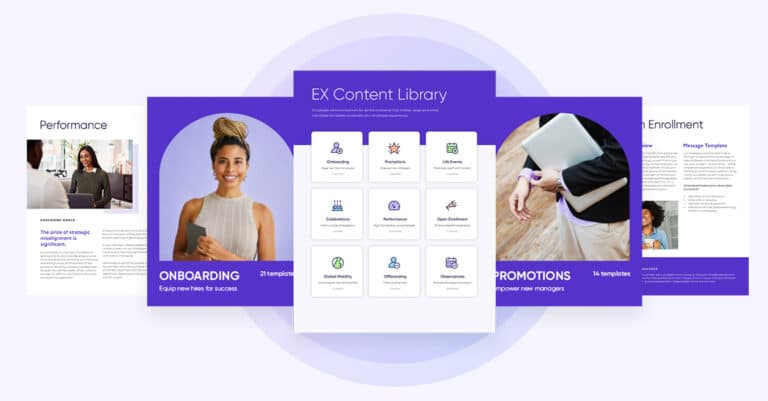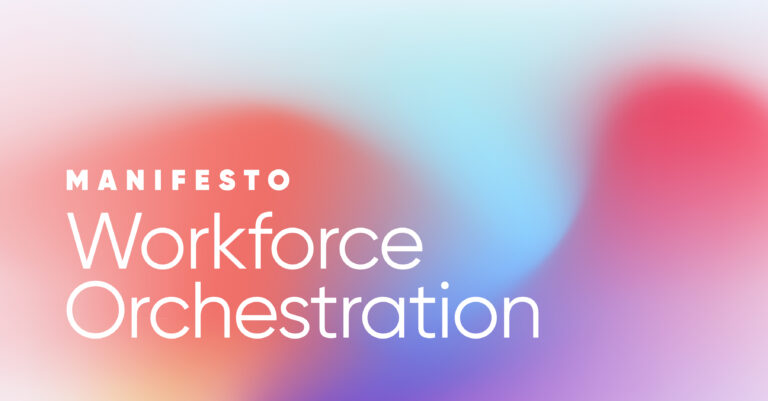“What do you mean we could have a pizza delivered on Wednesday, paid for by the company? I had no idea! Why didn’t anyone tell me?”
If you are a human resource or internal communications leader, you know how important it is to stay in contact with your employees. But if you are sending email after email, and seeing only declining open rates and mediocre responses, you may not be using email in the most effective way.
Case in point – no one knew about the free pizza!
Email, at least how we all currently use it, isn’t going away anytime soon. (Even if we all secretly wished it would.) The constant ding of email notifications for newsletters, updates, questions, product sales, tech support asks from home, and, of course, spam, tends to make employees hardened to even open them.
After all – how many of you have deleted a company newsletter or email without even reading the subject line, never mind the content itself? Go on, be honest – we’ll wait.
Creating engaging employee email should be top of mind for communication pros, especially in the “new normal” of the workplace, with employees doing some combination of on-site, remote, and hybrid work.
Communication ideas that would work in a predominantly office-based workplace may need to be adjusted for this new paradigm, and in this post, we’re going to focus on best practices for internal communication via employee email; namely, best practices for increasing employee engagement and making for a better employee experience.
Gone are the days of measuring the effectiveness of communication by how many readers you reach outside of your organization. Effective communication isn’t just for external marketing anymore… internal communication is vital for the success and growth of your employees and your business alike.
Just posting information to your company website isn’t enough anymore; you need to reach workers where they are, at the right time, and with the right message. You must be able to create relevant and engaging email content in order to get the best out of your team.
Read on to find out how!
What is internal communication?
Internal communication (IC) is defined as the method and process of keeping employees connected and informed while creating a shared understanding of company strategy, values, goals, guidelines, and culture. This can be done via emails, newsletters, surveys, internal meetings, town halls, an open-door policy, etc.
Internal communication is critical for keeping your employees up-to-date on how a company is doing, its latest initiatives and changes, establishing trust and fighting the rumor mill, and providing a way for a leadership team to deliver – and receive – clear communications among departments while working to increase employee engagement.

And while some companies “wing it” when it comes to reaching employees, or don’t have an internal communications strategy in place at all, it’s important to note just how essential having one is.
Successful communication increases productivity, ideation, innovation, loyalty, and profitability.
On the flip side, according to research by Gartner, poor communication amongst employees is responsible for 70% of corporate errors – and we definitely want to avoid those!
When it comes to sending internal emails, leaders can no longer send generic mass email and hope for the best; they need an internal email communication strategy. And an effective one, at that.

Building an employee email and internal comms strategy
Now that we are all on the same page in terms of just how important internal communications is in the workplace, let’s look at building a successful employee email strategy.
Despite Slack, Teams, mobile devices, voice calls, texting, and in-person meetings, email is still the most popular way to deliver communications to all of your workforce. And understanding how and why employee engagement is directly related to your email communications is key, especially when trying to meet the disparate needs of your in-office, hybrid, and remote workers.
From setting clear goals and writing the perfect subject line, to creating diverse email content that is mobile-friendly and measuring your key performance indicators (more on that later), your strategy must be one that ensures success.

No single “way” works for every organization, and over the last decade or so a number of employee communication platforms have been developed, designed to help companies build an employee email strategy and customize how they communicate with their workforce.
Firstup is the leading employee email workforce communication platform that supports over 40% of the Fortune 100 and is the email of choice for the world’s top enterprises. We help you reach employees with relevant and engaging content, without the traditional hassles of email management.
See how easy it is to send emails and grow your employee engagement with Firstup email
Check out How to build a successful internal communications strategy to get started on creating a strategy that works best for your organization.
So, when you do have an email strategy in place… how do you put it into play for your employees and start reaping the rewards? By adhering to best practices, of course!
Let’s look at the key best practices for email.
Best practices for employee email
As mentioned earlier, with so many companies and employees working either remotely or hybrid-remote, it’s important to know how best to communicate with all of them, no matter where they are or what their job title is. This is where best practice comes in; a set of “rules”, or guides, on how best to structure internal communications via email with employees.
With that in mind, let’s discuss the top 10 best practices for employee email that will ensure your employees stay informed, engaged, and connected.
1. Draw up an internal communication strategy
This is number one on the list for a reason. Without a strategy to measure the results, whatever you come up with will most likely fail – eventually. Don’t just toss ideas at the wall and hope one of them sticks; put in the time and effort to develop an effective internal communications email strategy. Following this best practice sets you up for success before you even start!
2. Maintain a regular stream of communication
Ever worked for a company that sent out a weekly newsletter just a few times a year? Us too. Nothing kills employee interest like sporadic messaging! Set up a regular cadence in your strategy, so your employees know when they can expect to receive an internal newsletter or email communication. That said…
3. Avoid communication overload and complexity
You do not need to send an email for every.single.announcement. Unless something is time sensitive, or particularly relevant information, do your best to not message the entire organization and fill up employee inboxes.
Email overload is a real thing, and it’s a best practice to avoid having your communications buried amongst the thousands of other emails your employees receive. You want to increase open rates, not decrease them!
4. Create engaging subject lines
A boring subject line guarantees that your employees won’t even open the email and read the entire thing. Subject lines need to be interesting, engaging… maybe even mysterious! Check out How to improve your subject line in 3 easy steps for more.
5. Establish a two-way channel for manager and employee feedback
Email may feel like one-way communication, without the ability to garner feedback, but really, it’s all in how you use it. You can include surveys, polls, forms for submitting questions or future newsletter ideas, or any other employee listening ideas. This is especially true when discussing new initiatives or strategies, to make your employees feel valued and heard.
6. Ensure your messages reach employees no matter where they are
Instead of blasting out your communications like you are hunting for prospects and doing some blind email marketing, build and use highly-targeted recipient lists (by job title, department, manager, etc.) to automatically curate your employee experience with dynamic, targeted internal email content. Make sure they are mobile-friendly, too, especially if you have a lot of frontline employees who most likely will receive your messages on their phones!
Hyper-personalized comms for every employee
7. Start tracking email analytics
How would you know if your email communications are working if you aren’t measuring their effectiveness and engagement levels? As part of your strategy building, a best practice is to use data-driven internal communications and identify your key metrics to track for business success.
We created this step-by-step guide on How to Measure Internal Communications to help you do just that.
8. Use pre-set email templates and automation
If you have to build each email from scratch, you’re going to view communication as a slog. Save yourself time and energy and use email templates and automation! Firstup’s email platform allows you to quickly customize designs with a drag-and-drop email template editor that adjusts to end-user devices, so emails and employee newsletter content always look great. It also lets you set recurring campaigns or an internal newsletter on a daily, weekly, or monthly cadence to help guarantee your internal communications get tons of interaction.
9. Send your emails at the optimal times
Sending internal emails to your east coast employees at 10 pm on a Friday night is a surefire way to ensure the message doesn’t get read, even if it is important. Optimize delivery times for employees or groups to reduce information fatigue, encourage readership, and ensure engagement, with automated campaign follow-up and resending.
10. Link to relevant, shareable content
If you want your employees to engage with your content, you need to give them something to relate to. Whether it’s company or industry news, fun infographics, or just an interesting take on funny stories online, make sure you provide links to shareable content. This not only makes employees feel “in the know”, but it can also help them become better brand advocates. Make content bite-sized, easy to share, with interesting text and graphics, and you’re sure to get more engagement from employees.
Employee email best practices increase employee engagement
Poor company comms is a top contributor to disengagement, according to Gallup. The overall percentage of engaged workers during 2022 is only 34%, down from 39% in 2021, so there is definitely work to be done to get those numbers up.
And since it has been shown that companies with a high level of employee engagement are more profitable by a factor of 21%, properly communicating with them is vital not only to their own personal success but also to the organization.

By feeling valued, heard, and cared for, employees start to identify themselves with the company’s vision, values, and goals. By carefully following email best practices when setting up internal communications, you can play an important role in helping employees reach their full potential and become more engaged in every aspect of their job.
Conclusion
Especially in this “new normal” of remote and hybrid workforces, your company cannot afford to neglect employee communication. Your workers are depending on you to deliver targeted, relevant, and personalized communications, so they can do their job effectively. It’s up to you to make it happen!
By working to build, follow, and measure employee email best practices at your organization, you’ll be doing your part to meet business goals, increase employee engagement, and make for a better employee experience. Just think about how much your company would benefit even if your employees had just a ten percent increase in workplace satisfaction! Successful email communication is the key to that success.
One way to simplify your efforts is by using a workforce communication platform that has an integrated email solution so you can target, personalize, and measure employee email engagement across your company. Firstup can help!
To learn more about how Firstup is helping organizations improve their internal communication strategies, including the use of email, request a demo of our platform today.
Deliver a hyper-personalized employee experience at scale
Download PDF








